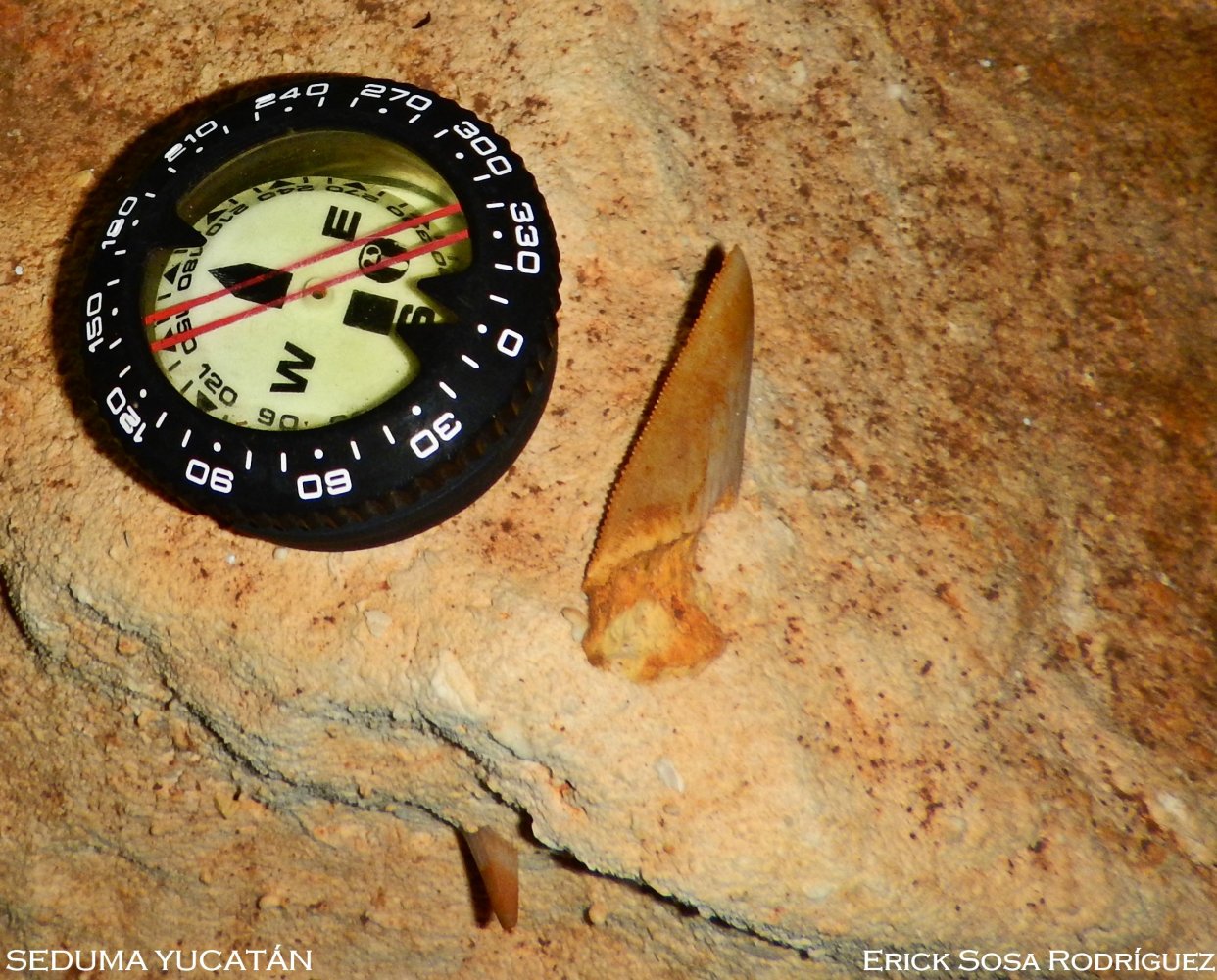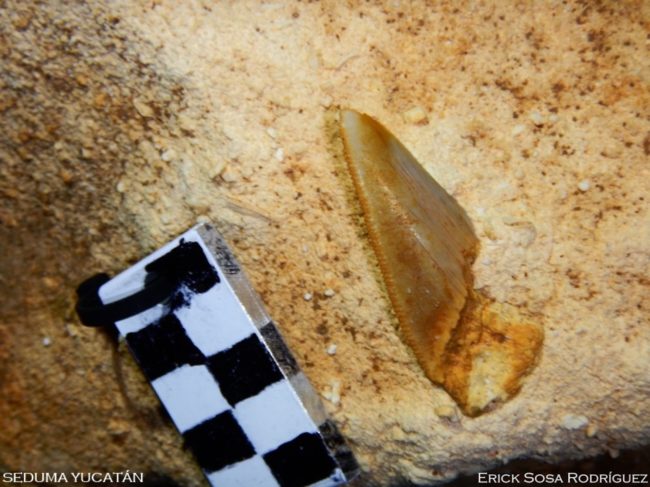During the State Count of Cenotes and Caves, several fossils were found submerged at 25 meters depth, and approximately 100 meters had to be drilled. Among the specimens found, two were teeth of a prehistoric shark, which was later confirmed to be from the Megalodon species.

Megalodon teeth found in an underwater cave in Yucatán. The second tooth trapped between the two rocks can be appreciated at the bottom.
Photo: SEDUMA
The State Ministry for Urban Development and the Environment (SEDUMA), which promotes this type of exploration, reported that several bone fragments attached to large rocks were found during the immersion in an underwater cave. They were located in a chamber about 30 meters long, 15 meters wide and five meters high. Of the two pieces, one could be almost seen and it measured between five and six centimeters [length]; its base and sawed edges were exposed. Unfortunately, the other is trapped between two rocks and was not fully examined.
These would later be confirmed to be part of a extinct shark species known as Carcharocles Megalodon or just Megalodon. These sharks inhabited the oceans around 19.8 and 2.6 million years ago, during the Cenozoic era, between the Miocene and Pliocene periods.
Megalodon means large tooth in Greek, and it is an extinct specie considered one of the largest and most impressive vertebrate predators that have ever existed on the planet. It is believed that it looked very similar to the white shark or Carcharodon carcharias. Nonetheless, there is a clear difference between these two sharks; Megalodon’s size was between 15 and 20 meters long [43 to 66 feet], and it could weigh up to 103 tons, which is equivalent to 20 average-sized elephants.
Pprehistoric shark fossils previously were found in the Kambul cenote [located in Mérida]. On that occasion, the cave diver Fernando Rosado found the remains of a sirenido. Unfortunately, it was looted and only holes were left where the pieces once were discovered. Likewise, traces of this shark type were identified in a cave of Dzilam de Bravo. These discoveries were around 60 kilometers apart, indicating that these large animals were well distributed and reigned what we now known as the Yucatan Peninsula. Moreover, rescued megalodon teeth are on display at Mexico City’s museums.
The cave divers responsible of the explorantions and findings of the Megalodon sharks were Cristian Alejandro Selún, from Adventure Tours Yucatán, and Erick Sosa Rodríguez, from the Department of Karst Systems Management [from the SEDUMA].
SOURCE: La Revista Peninsular






